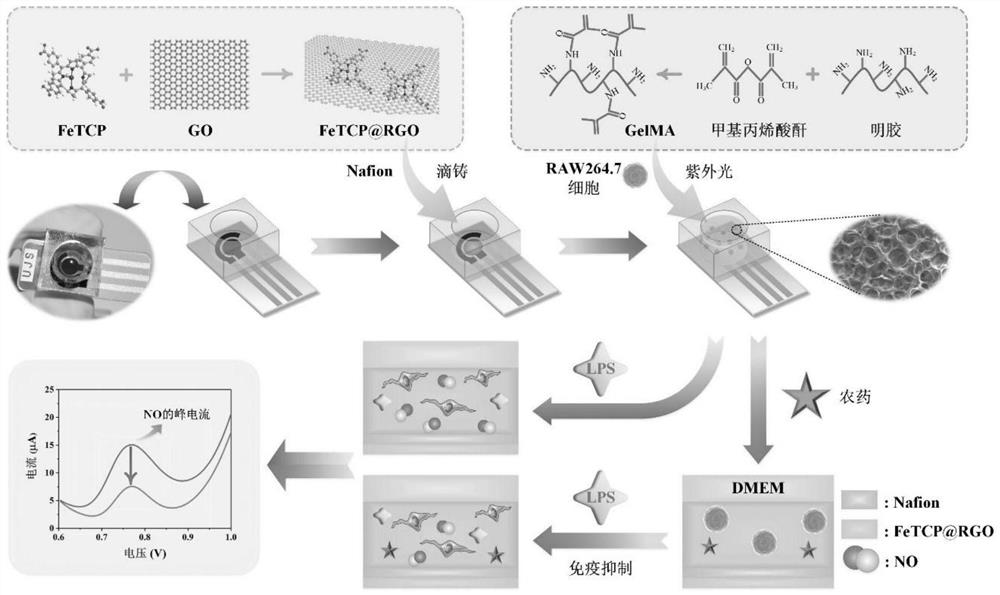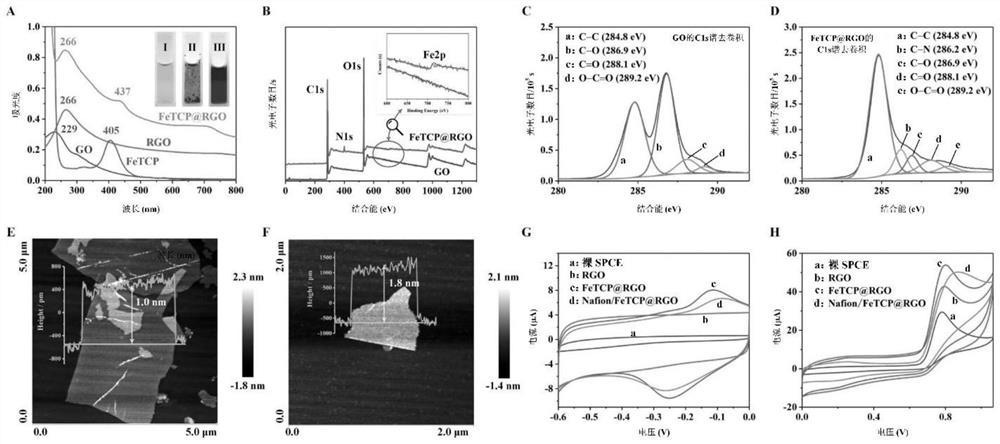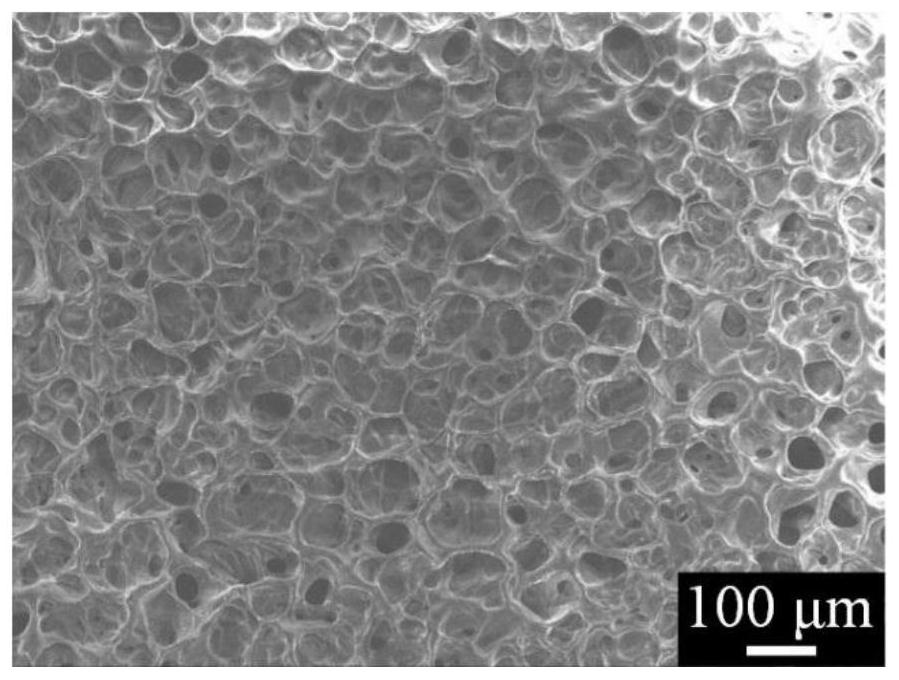Method for evaluating immunotoxicity of pesticide based on three-dimensional cell electrochemical sensor
A cell sensor, three-dimensional cell technology, applied in the field of pesticide immunotoxicity evaluation based on three-dimensional cell electrochemical sensor, can solve problems such as inability to accurately reflect cell responses, and achieve the effects of convenient equipment, fast response, and accelerated detection speed.
- Summary
- Abstract
- Description
- Claims
- Application Information
AI Technical Summary
Problems solved by technology
Method used
Image
Examples
Embodiment 1
[0059] (1) Preparation of FeTCP@RGO;
[0060] Add 4 mg of graphene oxide to 16.5 mL of ultrapure water, and ultrasonically dissolve it at room temperature for 20 min. Subsequently, 17.6 mg of FeTCP was dispersed in 3.5 mL of DMF / water mixture (4:1, v / v) to obtain mixed solution A; it was added dropwise into the GO suspension. The resulting mixture was further sonicated for 30 minutes and then stirred overnight at 70 °C to obtain a reddish-brown solution. During this process, FeTCP self-assembles onto graphene oxide via hydrophobic interactions and strong π–π stacking. Then, 3.2 μL of hydrazine solution (volume concentration 85%) and 64 μL of ammonia water (25 wt%) were added to the above solution, and stored at 95° C. for 1 h under vigorous stirring. The obtained FeTCP@RGO was centrifuged at 10000 g for 20 min and washed 3 times with ultrapure water. Finally, 15 mg of the obtained FeTCP@RGO was dispersed in 4 mL of ultrapure water by ultrasonic waves to obtain a FeTCP@RGO s...
PUM
| Property | Measurement | Unit |
|---|---|---|
| thickness | aaaaa | aaaaa |
| diameter | aaaaa | aaaaa |
Abstract
Description
Claims
Application Information
 Login to View More
Login to View More - R&D
- Intellectual Property
- Life Sciences
- Materials
- Tech Scout
- Unparalleled Data Quality
- Higher Quality Content
- 60% Fewer Hallucinations
Browse by: Latest US Patents, China's latest patents, Technical Efficacy Thesaurus, Application Domain, Technology Topic, Popular Technical Reports.
© 2025 PatSnap. All rights reserved.Legal|Privacy policy|Modern Slavery Act Transparency Statement|Sitemap|About US| Contact US: help@patsnap.com



